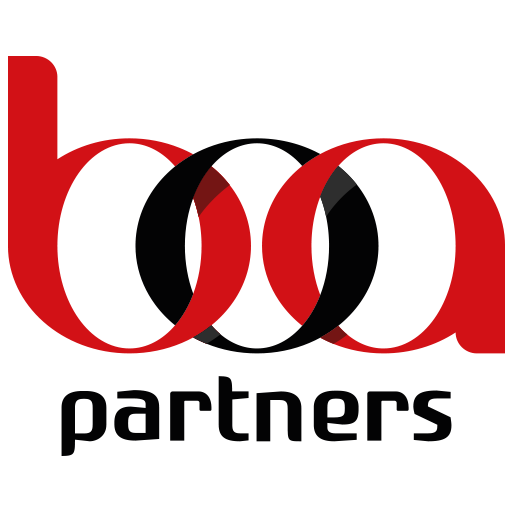More complex products may require a hierarchical BOM that shows the relationship between assemblies, subassemblies and components. A BOM is a list of all the materials, components, parts and assemblies required to build, repair or maintain a product or service. The BOM includes all the information necessary to procure or manufacture the product or service.
A manufacturing BOM is essential in designing enterprise resource planning (ERP) systems and in materials requirement planning (MRP). Well, you’re in luck, Katana’s cloud manufacturing software embeds your BOM inventory and entire workflow. That means you can see how your BOM inventory affects production and sales from a single platform. Specifying the product color will help to ensure there are no errors made by those using the bill of materials to create the finished product, especially if you have a lot of color variants. The CBOM is used to dynamically create products that a company sells, so they can easily be molded and shaped.
How to Create BOMs in 7 Steps
There are several software applications that can be used to create and manage BOMs. Some of these applications are designed specifically for managing engineering data and supporting manufacturing operations. Others are more general purpose project management or product lifecycle management applications that have features for managing BOMs. Computer-Aided Design (CAD) and Electronic Design Automation (EDA) software tools give a team of engineers the functions they need to collaborate on these kinds of specifications for a finished product.
Manufacturers often plan one or more First Article Reviews in which the manufactured part is disassembled by the product team before a final product release. First Article Reviews are typically integrated into formal or informal new product manufacturing processes with ECO systems to ensure that changes can be tracked to validate resolution. Feedback from these systems in manufacturing can also inform ongoing Quality Control (QC) and Quality Assurance (QA) procedures.
of Materials?
In multi-level BOMs, the top-level acts as the “parent” item with the second level of one or more components that are blended or assembled acting as the “child”. A sales BOM lists the products and components required to develop a product as ordered by the customer. It’s developed from the sales order and includes both the finished product and components, as they appear in the sales record. An engineering BOM is developed while a product is being designed and defines a finished product’s original design. It includes the items, parts, components and subassemblies as designated by engineering.
The list would include the seats, frames, brakes, handlebars, wheels, tires, chains, pedals and cranksets, as well as the quantities of each component and their cost. BOMs can be created using physical products or a software-as-a-service bill of materials product. The advantage of using a bill of materials is streamlining and improving the efficiency of the manufacturing process by enabling detailed planning.
Manufacturing bill of materials (MBOM)
This can be used to release long lead-time parts to production as early as possible. A standard IEC power cord might be in the Production phase, even as the top-level part for the computer chassis is still in the Design phase. Like a single-level BOM, multi-level BOMs contain materials and quantities for producing a finished good. However, for complex manufactured products, a multi-level BOM may have several sub-levels that feed into the final top-level BOM. The engineering bill of materials is used for the creation of a new finished good. It is the ground zero for a finished product that lists all parts, components, and materials for the finished product as it was originally designed.
- Here we look at why that is and how growing manufacturers can best use BOMs.
- A sales BOM lists the products and components required to develop a product as ordered by the customer.
- Manufacturers often plan one or more First Article Reviews in which the manufactured part is disassembled by the product team before a final product release.
- These notes, which you likely already store in your inventory app, should be included on your bill of materials.
- For example, a computer is exploded into hard drives, computer chips, random access memory panels, and processors.
- Delivering the wrong cable with an iPhone or some third-party accessory, would leave frustrated customers asking for refunds.
A bill of materials is a comprehensive list of items that are required to build, manufacture, or assemble a product or service. The bom includes raw materials, components, sub-assemblies, and finished products. It also includes the quantity of each item, the unit price, and the total cost. A bill of materials is also sometimes referred to as a product structure tree or an ingredient list. An essential step in manufacturing is completing a bill of materials, or BOM. In this article, we’ll learn the ins and outs of creating a bill of materials, including every detail you should list on your BOM.
Learn How NetSuite Can Streamline Your Business
Manufacturers of complicated electronic products must manage, track, and store hundreds—if not thousands—of parts in their product development processes. And every time a new part is added to a company’s library, it can cost $15k in time and effort to qualify and rollout. For product companies working with distributed teams and supply chain partners, collaborating on the latest bill of materials (BOM) is critical to reduce production errors and shipping delays. For example, if a bicycle manufacturer wants to build 1,000 bicycles, the bill of materials will consist of all the individual parts needed to build the bicycle.
What is BOM in process industry?
A bill of materials (BOM) is a comprehensive inventory of the raw materials, assemblies, subassemblies, parts and components, as well as the quantities of each needed to manufacture a product. In a nutshell, it is the complete list of all the items that are required to build a product.
Furthermore, engineering teams will create engineering bill of materials (EBOMS) and the manufacturing teams will rely on manufacturing bill of materials (MBOMS). This BOM approach requires more work to create but https://personal-accounting.org/what-is-a-bom/ offers greater details and specificity on the parent and child parts in the product. And the product structure shows the relationship between the parent and child product, as well as assemblies and subassemblies.
Given the range of information within a bill of materials, creating one often requires input from a company’s cross-section of functions. This can include design, engineering, purchasing, materials management and manufacturing. Creating an effective bill of materials is part of sound supply chain management. Learn more about enterprise resource planning and key features of ERP systems with this complete guide.
- Katana fills in the stock cost automatically based on the quantity you entered before, making it easy to track the costs.
- It’s useful for estimating the cost of materials, planning purchases, ensuring availability of parts, and avoiding delays in production.
- Your product may include PCBAs, also known as printed circuit board assemblies.
- While the concept of a BOM is straightforward, creating and managing bills of materials can become complicated, especially for products composed of hundreds or thousands of parts.
Bills of material are often used in engineering and manufacturing settings as a way to provide visibility into the production process. A bill of materials (BOM) is a comprehensive structured list of raw materials, subassemblies, intermediate assemblies, subcomponents, parts, and the quantities needed to manufacture a product. It has various applications and is sometimes referred to as a production recipe, assembly component list, or BOM inventory. By providing a single record of the materials, components and assemblies that go into the product, a bill of materials ensures these items are in-house when needed and at the quantities required during production. This minimizes inventory inaccuracies and production delays, both of which cost time and money.
Manufacturing BOM
Because of the depth and breadth of information they provide, BOMs can boost supply chain resiliency. A production BOM acts as the foundation for a production order and includes the components and assemblies that make up a product. As production proceeds, the components are converted to finished products. Both single- and multi-level BOMs may be created for use at various stages of the product development lifecycle.
- As you can see, there is a lot to think about when using Excel to manage your BOMs.
- A manufacturing BOM is the most recognized form and consists of all materials, assemblies, formulas, or components required to produce a shippable product.
- As the wire is the only component, it lends itself to a single-level BOM.
- A BOM doesn’t just list what’s needed to manufacture a product, but how much of it.
- After an hour or two of furious manufacturing, you step back and notice that the item resembles nothing like what’s on the box.
A bill of materials (BOM) is a structure for making a product repeatably every time. It contains the list of materials, assemblies, sub-assemblies, formulations, mixes, or other components that go into each finished product. A bill of materials identifies all the different raw materials, components, and parts your team needs to manufacture a product for sale. And just about everything you track on your BOM, you can also track using an inventory app. Once you’ve got a pretty good idea of what you’re making, you can create your EBOM (engineering bill of materials).






